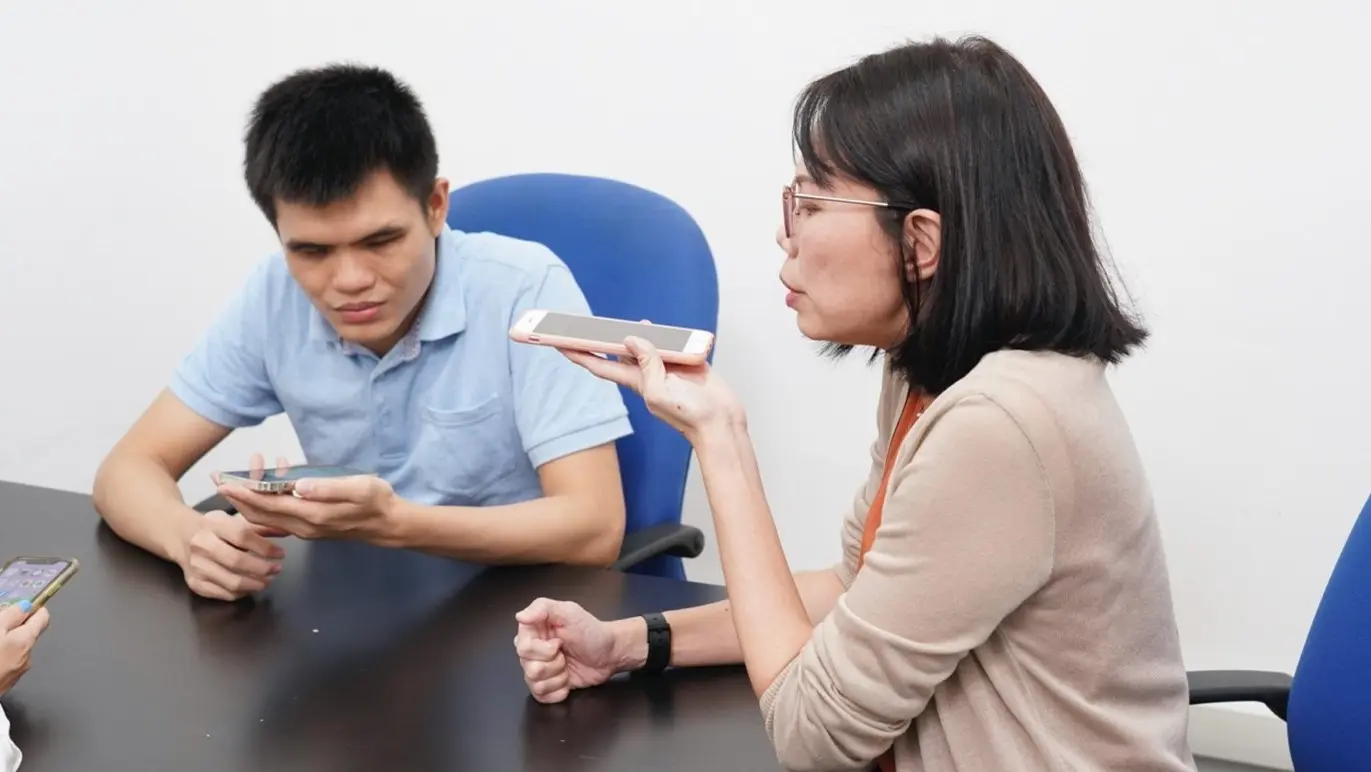
From streaming the latest television series to attending virtual classes and having e-gatherings with loved ones, much of our lives take place in the online sphere. However, while digital advancements have made the world more convenient for many of us, for groups like persons with visual impairment, benefitting from technology isn’t quite as easy as just tapping a screen.

To welcome such groups into the digital fold with accessible solutions, the Digital for Life movement was launched by President Halimah Yacob—dedicated to supporting community efforts that promote digital well-being and inclusivity and the embrace of empowering technologies for all Singaporeans.
Launched in tandem, the Digital for Life Fund is administered by the Infocomm Media Development Authority (IMDA) to provide funding support to non-profit organisations that promote digital inclusion, literacy and wellness. With the government matching each donation, the target for the fund is $10 million by 2023. Currently, $4.9 million is planned to go towards supporting 22 community projects.
With the support of IMDA’s Digital for Life Fund, the Singapore Institute of Technology (SIT) and Guide Dogs Singapore (GDS) work together on one such project to formulate an effective training and learning resource toolkit for persons with visual impairment. Underpinned by experience-based co-design, the project aims to close the digital divide for persons with visual impairment and leverage assistive technology as they learn how to navigate smartphones and mobile applications that may not have been particularly designed with their needs considered.
The value of a personal touch
When it comes to the digital world’s latest gizmos, without proper guidance and support, persons with visual impairment may have difficulty learning how to navigate such devices. According to Mr Chia Hong Sen from GDS, when helping a person with visual impairment navigate unfamiliar devices, the power of a “personal touch” cannot be underestimated.
Smartphone training is more than just teaching skills and knowledge. It’s about truly understanding how the use of smartphones as an assistive technology device can help them achieve independence.
Mr Chia Hong Sen
From connecting with the learner on an emotional level to having a personalised training programme tailored to them, better tools at a trainer’s disposal could vastly improve the dynamic and rapport between the pair, enhancing the learner’s readiness to assimilate new knowledge.
Another obstacle typically lies in the user interface and user experience designs of assistive technology devices. When bombarded with unfamiliar technical terms, learners can easily be disengaged and lose interest. “Smartphones are designed primarily with visuals in mind,” explained Mr Chia. “Aligning technology concepts with the learner’s intrinsic understanding can be a tough nut to crack.”
In view of these challenges, Ms Tan Hwei Lan, Senior Lecturer at SIT was inspired to shake up the status quo. She believes that while the advancement of assistive technology devices provides increasingly helpful aid to persons with visual impairment, developing better training resources plays an equally important role in providing access to digital devices that can improve their daily lives.
Our goal is to streamline how visually impaired learners and their technology trainers alike access online resources. Instead of having to surf through a myriad of websites online, we want to devise a well-curated training and learning toolkit that is not just easily accessible but also free for all—supplying trainers with the right resources to help persons with visual impairment be more adept at using digital devices.
Ms Tan Hwei Lan
“For a project of this scale, collaboration is key,” added Ms Tan. Harnessing the expertise and experience of all parties during the fundamental design of the toolkit would ensure that it’s well-suited to address the differing needs of PVI, which could make the learning process more organic and impactful.
Designing better together
Divided into two phases, the project first includes the beneficiaries themselves as partners during the co-design process, allowing the SIT and GDS research team to truly grasp their needs and develop the toolkit with specific difficulties in mind. Phase two, slated to begin in early 2023 will see the toolkit thoroughly evaluated by stakeholders and further improved until it is ready for public release.
This year, the project will begin with co-design meetings to better understand the needs of the community and address the research gap. “Looking at the preliminary research results, I am heartened to learn that our approach to training is also being shared by other trainers beyond the shores of Singapore,” added Mr Chia.
With support from IMDA’s Digital for Life Fund, SIT and GDS have the power to become the ‘go-to’ resource for a user-centric curriculum—saving users and their trainers the trouble of scouring the many varying resources available.
Digital for Life has made it possible for us to engage participants for this project, as well as partners in the future to make the toolkit accessible to the public. I envisage that not only local beneficiaries can tap into this evidence-based toolkit but anyone with access to the internet can download it and reap its benefits.
As IMDA continues to support valuable projects like this one, organisations like SIT and GDS are empowered with the resources they need to create meaningful solutions to build an inclusive digital society for all Singaporeans, promoting digital well-being and ensuring that no one is left behind in the digital age.
Do you have an idea for a project that can contribute to Singapore’s inclusive digital future? Non-profit organisations can apply for the Digital for Life Fund from 9 May to 4 July 2022. Find out how Digital for Life can help bring your project to life!



.webp)